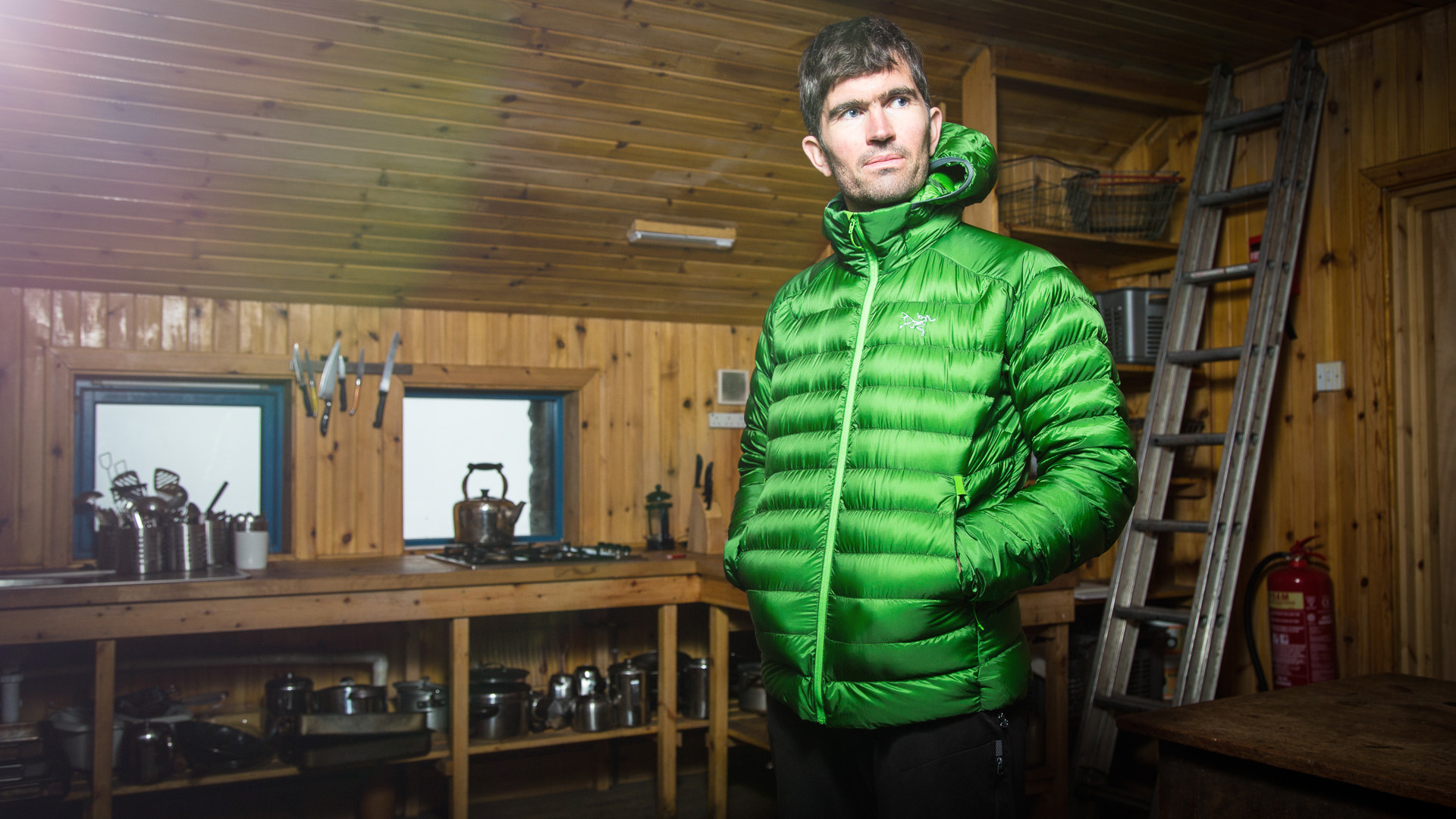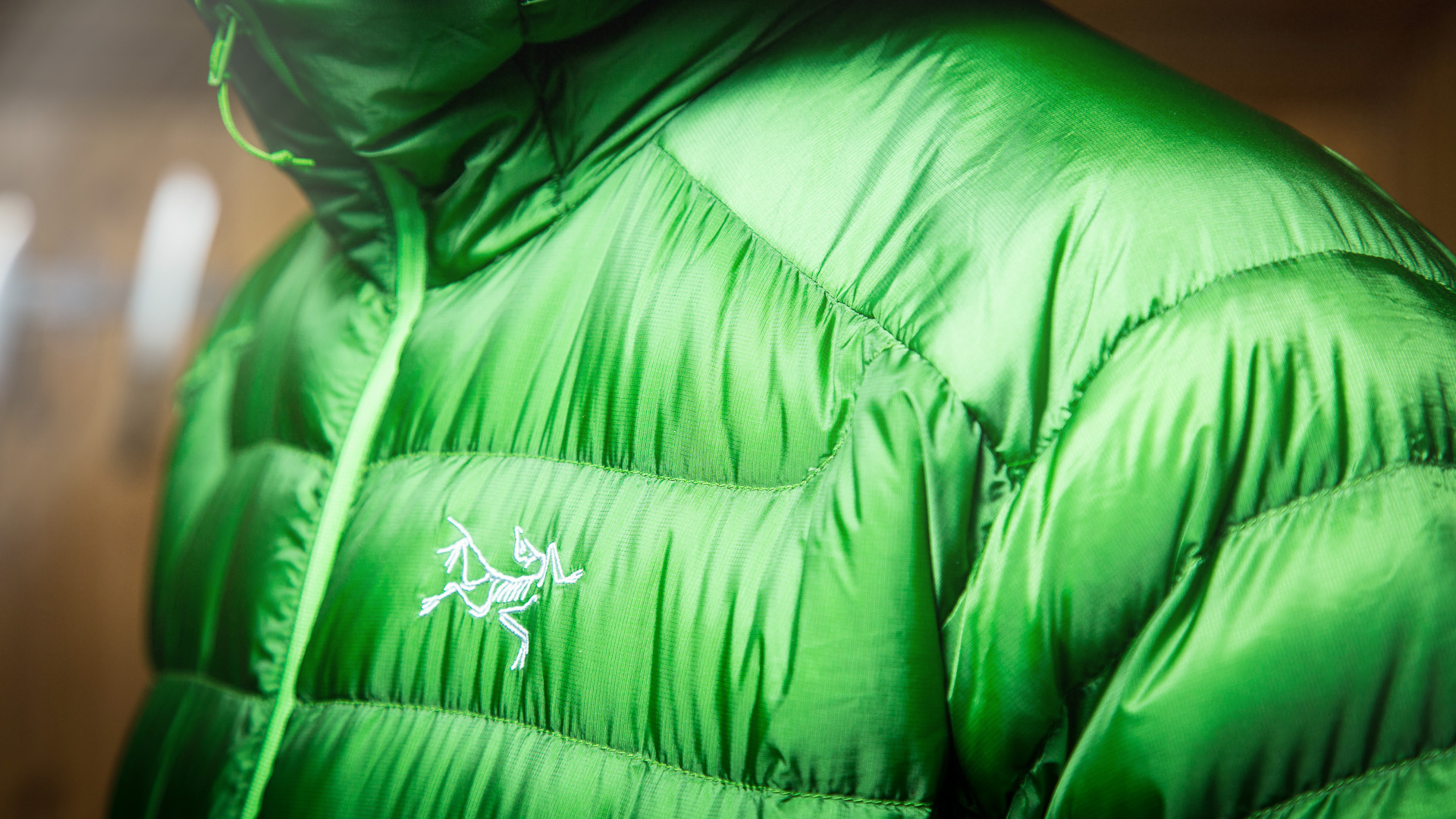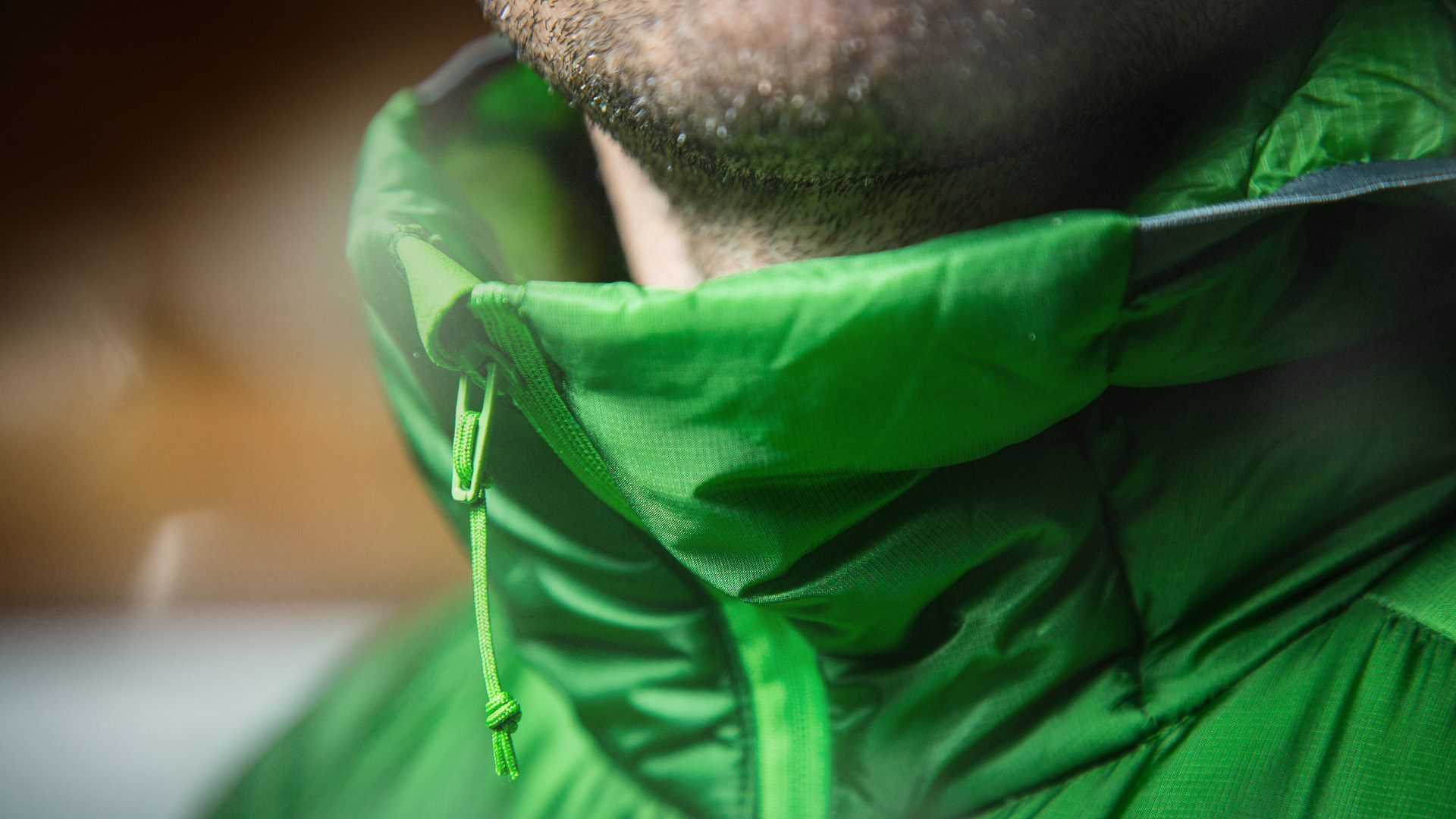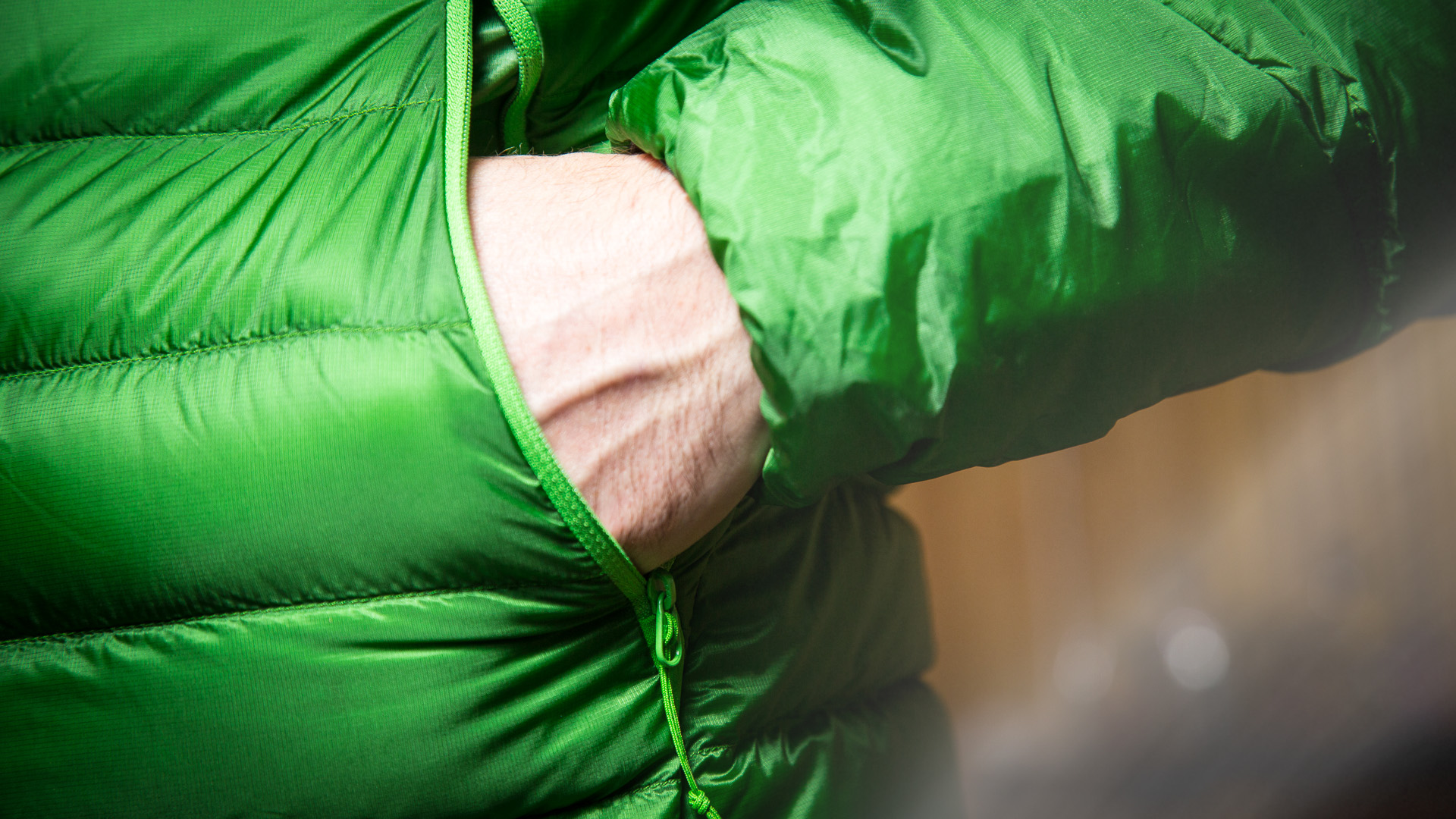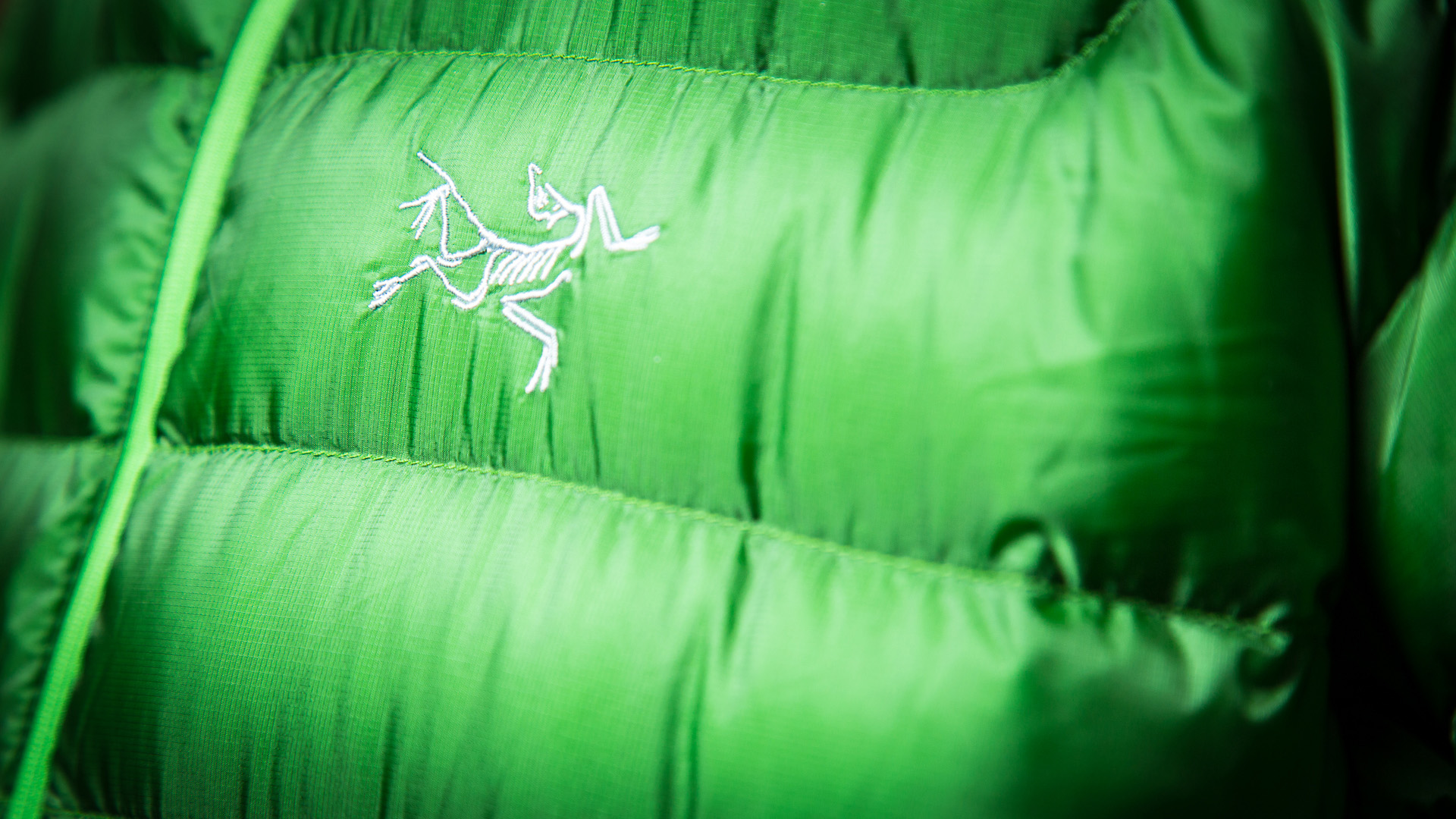Arc’teryx Cerium LT Hoody – The Stuffing
So what’s inside? High-lofting 850-fill power European white goose down. The higher the fill power, the more insulation you get from the same quantity of down and the stuff here is right up at the top end of the scale, os you’re getting more warmth – or volume of trapped air – per gramme of down.
It’s not water-repellent, which means if you get it really wet, it’ll collapse into a soggy mess and need special drying to restore its performance. Interestingly it’s been supplemented in strategic places with synthetic Coreloft panels, most obviously in the cuffs, to better resist damp in spots that might cop it when worn under a shell.
We’ve see one very well used Cerium LT where those synthetic-filled panels have lost their loft relative to the rest of the jacket, but we haven’t had that issue with either our original LT test jacket or this hoody version.
Arc’teryx Cerium LT Hoody – Performance
The thing with lightweight and ultra-lightweight down insulation is not reaching the point where the jacket is super light, but not really warm enough to bother carrying in the first place. The good news is that Arc’teryx has pretty much nailed the point where lightness and warmth intersect to optimum effect.
In other words, it’s decently light and packable, but it’s also deceptively warm. What’s the trick? It’s a combination of getting high-lofting, 850 fill-power goose down fill and light but tough, semi-translucent Arato™ 10, nylon fabric and optimising the amount of down in each baffled down compartment. The fit contributes too. It’s beautifully, uncompromisingly trim and athletic for optimum efficiency.
Warmer Then You Expect
All of which means that when you put it on, it’s deceptively warm, significantly warmer than you’d expect from a relatively compact bundle packed into its neat stuff-sac. Not as warm, obviously, as full-on, box-walled expedition duvet, but surprisingly effective for a sub-290g jacket.
That’s helped too by this version of the jacket having an insulated hood, which adds a little more usability. What’s particularly nice about it, is that there’s a drawcord adjuster, which in turn moves with your head unlike many down hoods.
Hydro-no-bic Down
What is interesting is that Arc’teryx has chosen not to use the currently modish water-resistant down, though the outer fabric does have a DWR treatment to shrug off light showers and snow melt. It also gets strategically-placed panels of synthetic CoreLoft in areas that might get damp when worn under a shell like the cuffs and hem.
That makes it best suited to cold, dry conditions – think NOT Scotland mostly – or at least inside when it is damp. To be fair, we’d still choose synthetics or a blend over water-resistant down for any sort of consistently wet weather use.
Close Fit
The fit is beautifully close and athletic, which is a bit of a two-edged sword. It’s efficient, but also quite uncompromising if you’re the wrong build. It also means that you can layer it under a shell just fine, but you won’t be doing any overlayering unless you’re very svelte.
Otherwise it’s all beautifully made and designed in the main. We’ve mentioned the hood already, you also get elasticated cuffs, zipped hand-warmer pockets and a stuff-sac. One point worth noting is that the hem is not adjustable and has no stretch.
For us that wasn’t a problem, the fit was snug enough to work and seal things up just fine, but if you’re relatively skinny, it could be an issue. Try before buying if you can.

